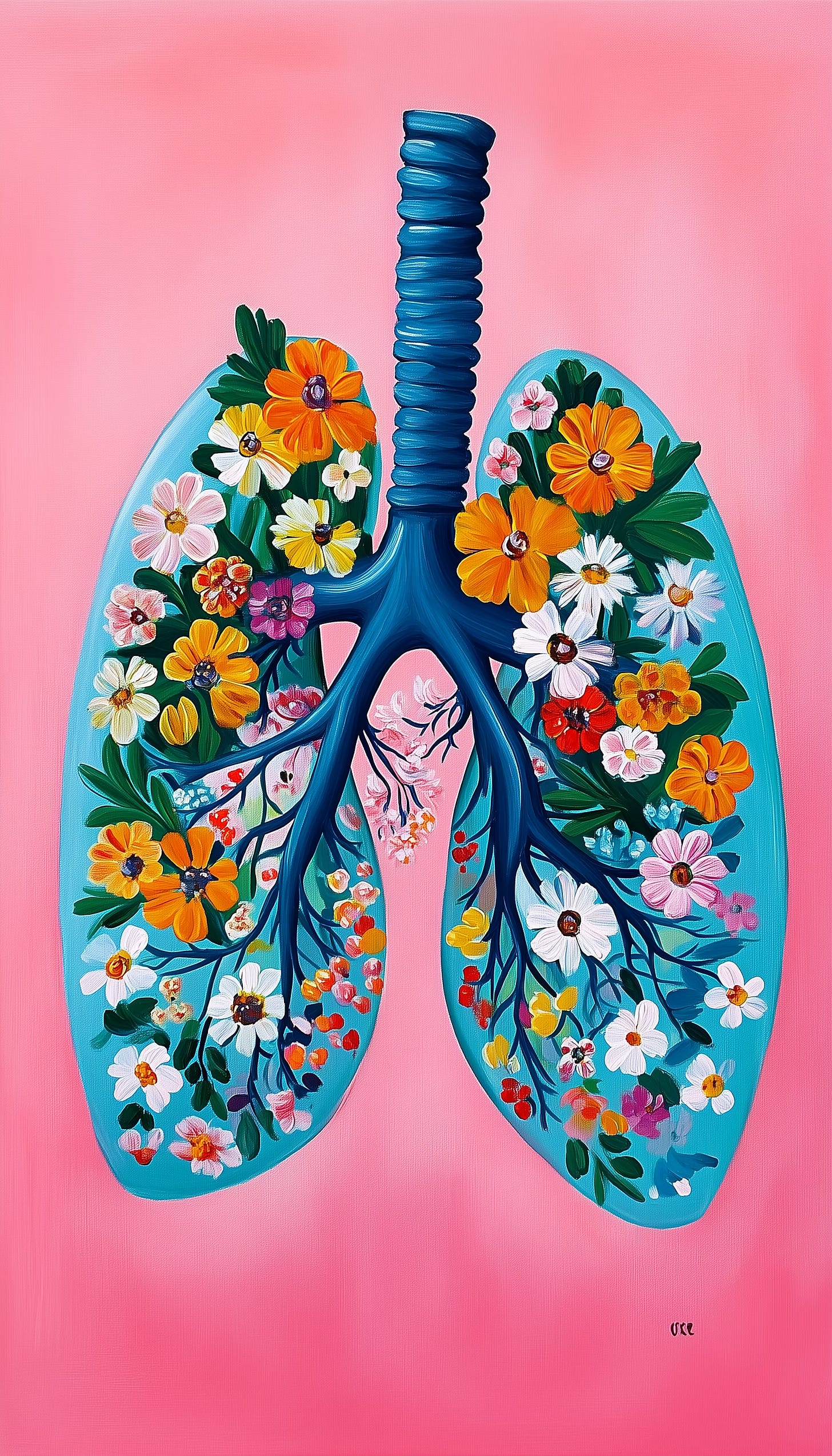As the colder months roll in, respiratory illnesses like walking pneumonia and bronchitis are on the rise, leaving many people struggling to regain full lung function. Walking pneumonia, though less severe than traditional pneumonia, can still leave you with reduced lung capacity for weeks. Fortunately, certain breathing techniques can help improve lung function, expand lung capacity, and support the healing process.
Breathwork has been practiced for centuries across various cultures, not only for physical health but also as a means to center the mind and elevate consciousness. In today's world, these time-honored techniques have found new applications in post-illness recovery, especially for respiratory conditions.
5 Breathing Techniques to Strengthen Lungs After Pneumonia
Diaphragmatic Breathing (Belly Breathing)
What it is: This technique focuses on breathing deeply into the diaphragm rather than the chest, allowing for fuller lung expansion. It helps strengthen the diaphragm and increase lung capacity.
Benefit: Enhances oxygen exchange and reduces stress, making it ideal for recovery after respiratory illness.
Historical Relevance: Diaphragmatic breathing is rooted in ancient yoga and meditation practices where breath control is seen as a pathway to both physical and spiritual health.
Pursed-Lip Breathing
What it is: This involves inhaling slowly through the nose and exhaling through pursed lips, like blowing through a straw. It helps control the breath and slow down the exhalation process.
Benefit: Keeps airways open longer, improving oxygen exchange and preventing breathlessness.
Cultural Significance: This technique has been used in many respiratory therapy practices and is often taught to patients with conditions like COPD to improve lung function.
Box Breathing (Square Breathing)
What it is: Box breathing involves inhaling, holding, exhaling, and holding again, each for an equal count (e.g., 4 counts in, hold for 4, exhale for 4, hold for 4).
Benefit: Helps regulate breathing patterns, improve lung capacity, and reduce anxiety, which often accompanies respiratory issues.
Historical Roots: Ancient yogic traditions have long used breath retention techniques similar to box breathing to calm the nervous system and control prana (life energy).
Alternate Nostril Breathing (Nadi Shodhana)
What it is: This yogic breathing technique involves alternating between the left and right nostrils to balance breath and energy flow throughout the body.
Benefit: Helps improve lung function, oxygenation, and promotes calmness and mental clarity, aiding recovery from respiratory issues.
Cultural Significance: Practiced for centuries in Ayurveda and yoga, alternate nostril breathing is believed to balance the body’s energy channels (nadis) and promote physical and mental harmony.
Resisted Breathing with a Straw
What it is: This exercise involves breathing in and out through a straw, which creates resistance and helps strengthen respiratory muscles.
Benefit: Strengthens the muscles that support breathing and can help improve lung function after illness.
Practical Application: Modern respiratory therapy often uses resistance techniques, and historically, forms of breath resistance have been used in yoga and martial arts for lung conditioning.
Cultural and Historical Relevance
Throughout history, breath control has been at the heart of many ancient practices, from yoga in India to qi gong in China. These techniques were developed not just for physical well-being but also for mental clarity, emotional balance, and spiritual development. Ancient texts like the "Yoga Sutras of Patanjali" and the "Hatha Yoga Pradipika" emphasize the role of pranayama (breath control) in balancing life energy and promoting health. In modern times, these practices have been adapted into respiratory therapies to aid recovery from illnesses like pneumonia.
Conclusion
Breathing exercises are a powerful and accessible way to improve lung capacity, especially after illnesses like walking pneumonia. By incorporating techniques such as diaphragmatic breathing, pursed-lip breathing, box breathing, alternate nostril breathing, and resisted breathing into your daily routine, you can support your respiratory system in recovering strength and function. These methods, rooted in ancient traditions and modern respiratory therapy, offer practical ways to breathe easier, reduce stress, and enhance overall health. As respiratory illnesses increase during colder months, taking proactive steps to support lung health can make a meaningful difference in your well-being.





